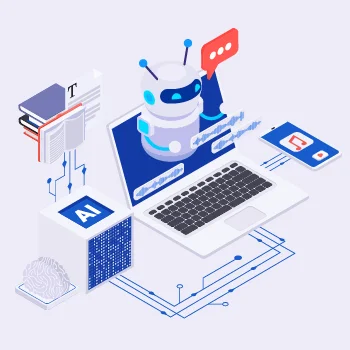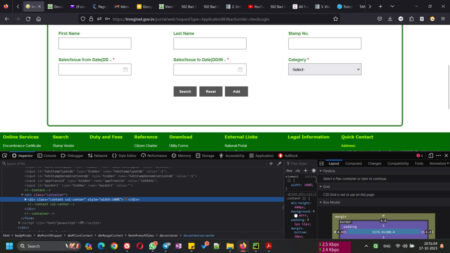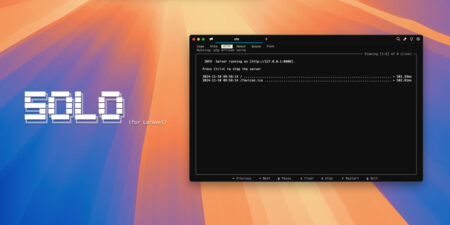On my application payment gateway is Braintree, I need to automate it and face some difficulties when I am automating it, the major problem is I cannot send credit card details using xpath, I research some tutorial for solve this and not find any good resources, please advise and guide me how I automate payment form using selenium
Libraries & Frameworks
Is there a way to read data from excel set global variable in SOAP UI and send those global variable in request payload and how to call multiple rest services?
If I go to appium.io I find a download link at github.com/appium/appium-desktop for stable 1.13.0 at https://github.com/appium/appium-desktop/releases/
There also exists a github.com/appium/appium repository at https://github.com/appium/appium/releases with current stable 1.14.1
On my Mac, I am running Version 1.14.0 (1.14.0.20190705.4) according to the Appium→About Appium menu, the main window shows the button Start Server v1.14.0, and starting a server shows Welcome to Appium v1.14.0 in the log, but selecting Check For Updates in the menu tells me that Appium Desktop v1.13.0 is available from May 5, which includes an update to Appium version 1.13.0.
How do I resolve these differing version numbers and the apparent downgrade?
I know that having interdependent tests is a bad idea. But, then my question is:
What are the valid usecases of dependsOnMethods which TestNg team provided ?
In other word, under what conditions i can have interdependent tests ?
AI-driven QA advisory and consulting services are reshaping quality assurance, moving beyond traditional testing to deliver proactive, intelligent solutions. From predictive analytics and automated testing to enhanced compliance and security, I discovered how integrating AI into QA processes enables companies to make the most of their business.
The post Crafting an AI Roadmap: Defining Your AI Journey with Expert Advisory Services first appeared on TestingXperts.
Artificial Intelligence (AI) can feel far from what it means to be human. It mostly focuses on thinking clearly and working efficiently. As we use technology more every day, we want machines to talk to us in a way that feels natural and kind. Artificial empathy is a new field aiming to close this gap.
The post What is Artificial Empathy? How Will it Impact AI? appeared first on Codoid.
I’m working on test automation for a big project and I’m using Phpunit and as a server I’m using Selenium WebDriver.
In the source code I’m using asserts like :
$this->assertContains(‘Project Title’, $this->webDriver->getTitle());
I’m wondering how can I add the if-else condition, that when it’s false I can have a popup or to stop the test.
Now in the application that i have to automate, there’s a jhtml Area element. This is a sample jhtml area: http://pietschsoft.com/demo/jhtmlarea/.
So the jhtml area has two elements for the text you enter. I have tried entering text using the text area tag. But doesn’t work out. Any ideas?
I’m facing a problem when I try to execute a UFT script using a VBScript file to call it. The code inside the .vbs file is below:
dim uft
Set uft = CreateObject(“QuickTest.Application”)
uft.Visible = False
uft.Launch
uft.Open “R:dataHPCJobsSpoolsubmit_2017.06_CAEDevGomputeBenchAppuft_script”
uft.Test.Run Nothing, True, False
uft.Quit
Set uft = Nothing
MsgBox “Test done”
Inside the UFT script I have 7 actions. When I double click the .vbs file the first action execute without problems, but when arrives in the second action start my problem: in all my actions (except the first one) has a code to create a .txt file. When the script create the first one (in the second action) it just stop to run all the rest of the second action and jump to third action to create the second .txt file, doing this for the rest of the actions.
I don’t know how this .vbs script are really doing and why it do not following the order of the script, because when I run inside UFT all works perfectly. Can anyone know what is the cause of this problem?
Thanks and regards.
I am trying to test a web portal using Selenium and Python. The problem is, I am unable to get around an error, in other words, I am unable to catch the alert.
Scenario:
Search for a user, if the user is not found, the website throws an error. I have a list that contains valid and invalid users to perform the search upon. When the search is successful, there are a few links I need to click to get to the user. If the user is not found, the links won’t be displayed and an error is displayed instead. The problem is when I search for an invalid user, the code is looking for the links that are displayed when the a valid user is displayed.
Code:
from selenium import webdriver
from selenium.webdriver.chrome.webdriver import WebDriver
from selenium.webdriver.support.select import Select
from selenium.webdriver.common.keys import Keys
from selenium.webdriver.support.ui import Select
from selenium.common.exceptions import TimeoutException
from selenium.webdriver.support import expected_conditions as EC
from selenium.webdriver.common.alert import Alert
from selenium.common.exceptions import NoAlertPresentException
import time
browser = webdriver.Chrome() # type: WebDriver is Chrome
browser.get(“https:URL”)
if option == ‘number’:
nums = [‘111’, ‘123’, ‘456’]
searchbox = browser.find_element_by_id(“searchPattern”)
noUser = browser.find_element_by_xpath(‘//*[@id=”includeError”]/div’)
try:
for num in nums:
searchbox.send_keys(num)
browser.find_element_by_xpath(‘//[@id=”User”]/input[2]’).click()
time.sleep(4)
user_links = [‘photos’, ‘message’, ‘mails’]
for url in user_links:
if url in user_links:
browser.find_element_by_link_text(url).click()
time.sleep(4)
elif url not in user_links:
print “No users found”
browser.switch_to_window(browser.window_handles[0])
time.sleep(5)
browser.find_element_by_id(‘searchPattern’).clear()
except noUser:
print “no users”
I want to add Jmeter tests as build steps in TeamCity server. If tests fail, a build will not complete. Please share how to do it.
I am currently using Jmeter for testing a Rest API running different scenarios/threads on a standalone machine. My intention is to put these tests in our existing CI/CD that has TeamCity. When we deploy a new release, Jmeter tests will run as automation tests and if any test fails, then the build will roll back and generate failure reports.
So we send out clients our test cases to help them with their UAT process and ensure they are testing our integrations properly.
Is there a TCMS on the market that actually exports test cases with the attached screenshots? Everything I see is a CSV file.
enter image description here
hi all
thanks for reading my question.
I tried to automate some of my work.
I tried to get the path of Add button using xpath finder
I found three links below. I tried to click on the add button but its not working.
The curser is in the first name box.
Below my code is there.
Please help me to click the Add button.
#driver.find_element(By.XPATH,”//div[@class=’content col-center’]/..//input[@name=’Add’]]”).click()
driver.find_element(By.XPATH,”//body/div[@id=’contWrapper’]/div[@id=’ContContent’]/div[@id=’pageContent’]/form[@id=’viewAllSales’]/div[@class=’container’]/div[@class=’content col-center’]/div[5]/..//input[@name=’Add’]”).click()
#driver.find_element(By.XPATH,”(//input[@name=’Add’])[1]”).click()
driver.implicitly_wait(60)
Game testing, including black box testing and unit testing, is a key part of the game development process. It helps to make sure that a video game is fun, works well, and offers a great user experience in that particular game. This testing covers many things such as the main features, graphics, performance, and safety.
The post Exploring the Different Stages of Game Testing appeared first on Codoid.
Text-based User Interfaces (TUIs) are gaining popularity in the Laravel ecosystem, thanks to the powerful capabilities of Laravel Prompts. Developers…
PHPStan just released v2.0.0 this week! This massive update is three years in the making, consisting of over 180 items…
In our web-application(built on Bootstrap and Angular), certain tabs in the navbar are displayed only to particular users. Certain input boxes/ buttons are enabled only to certain users. I want to write test scripts using Selenium/ Sikuli to test this functionality and I want your suggestions in this approach.
One of the ideas is to navigate to different pages in the UI, and use Selenium’s isDisplayed() and isEnabled() functions and make assertions. And capture screenshots accordingly?
The other idea is to use Sikuli and match certain submenus being present on hover, capture screenshots and compare with the expected.
Which approach do you guys think is the better one to use? Also, please suggest if there’s another way to do it.
Would also be so glad if you guys can provide me a generic method to test this.
I am a beginner in Appium automation. The application I am testing, have this scenario where I need to tap on Search button from the native keyboard. I have tried with pressKeyCode method but getting this error-
The method pressKeyCode(int) is undefined for the type WebElement
I am using the following Environment-
Appium 1.4.16.1 with Java client 5.0.0-BETA8
Selenium 3.4.0
I don’t know what I am doing wrong? I have tried with earlier Java client for appium as well but nothing has worked so far. Also, is there any workaround other than the pressKeyCode to do this?
I can’t find my XPath so that I can’t run the code. Can anyone solve this issue?
I have to do mouse hover manage content then click on content Library:
package TestNG;
import org.testng.annotations.Test;
import java.util.concurrent.TimeUnit;
import org.openqa.selenium.By;
import org.openqa.selenium.WebDriver;
import org.openqa.selenium.WebElement;
import org.openqa.selenium.chrome.ChromeDriver;
import org.openqa.selenium.interactions.Actions;
import org.openqa.selenium.support.ui.ExpectedConditions;
import org.openqa.selenium.support.ui.WebDriverWait;
import org.testng.annotations.BeforeTest;
public class MuviOTT {
public WebDriver driver;
static WebElement element;
//@Test
public void FreeTrail() throws Exception {
driver.findElement(By.xpath(“//button[@type=’submit’]”)).click();
driver.findElement(By.id(“name”)).sendKeys(“subhankar jena”);
Thread.sleep(5000);
// driver.findElement(By.id(“companyname”)).sendKeys(“itworld”);
driver.findElement(By.name(“phone”)).sendKeys(“7684914257”);
driver.findElement(By.id(“email”)).sendKeys(“xyz143@gmail.com”);
driver.findElement(By.id(“inputPassword”)).sendKeys(“Bbsr@2021”);
// driver.findElement(By.id(“subdomain”)).sendKeys(“iddomain”);
driver.findElement(By.id(“terms_check”)).click();
driver.findElement(By.id(“nextbtn”)).click();
}
@Test
public void f() {
}
@BeforeTest
public void openURL() throws Exception{
System.setProperty(“webdriver.chrome.driver”, “F:\Library\chromedriver.exe”);
driver = new ChromeDriver();
// Opening the Browser and Entering the URL
driver.get(“https://www.muvi.com/”);
// Maximize the Browser window
driver.manage().window().maximize();
//driver.manage().timeouts().implicitlyWait(2, TimeUnit.SECONDS);
Thread.sleep(1000);
driver.findElement(By.id(“load_login”)).click();
driver.findElement(By.id(“LoginForm_email”)).sendKeys(“subhankarjena14@gmail.com”);
driver.findElement(By.id(“LoginForm_password”)).sendKeys(“Gulu@123”);
driver.findElement(By.id(“btn-login”)).click();
Actions action = new Actions(driver);
// Mouse Hover actions on an element using Action Class:
action.moveToElement(driver.findElement(By.xpath(“//em[@class=’icon-film left-icon’]”))).perform();
WebDriverWait wait = new WebDriverWait(driver, 10);
element= wait.until(ExpectedConditions.elementToBeClickable(By.id(“//a[contains(.,’Content Library’)]”)));
driver.findElement(By.xpath(“//a[contains(text(),’Content Library’)]”)).click();
}
}
I want to include one .jar file which has classes of my core automation framework. I created a “lib” folder in my selenium project and then gave its path in the pom.xml dependency. This Jar file of framework is not a runnable jar. I exported the framework project as a jar and want to use its classes in my project.
However, im not able to use any class/method from that jar(framework) in my test scripts. Am i doing something wrong.






